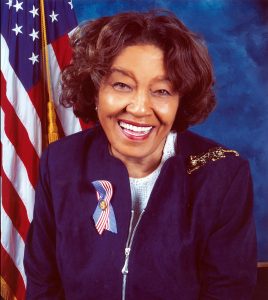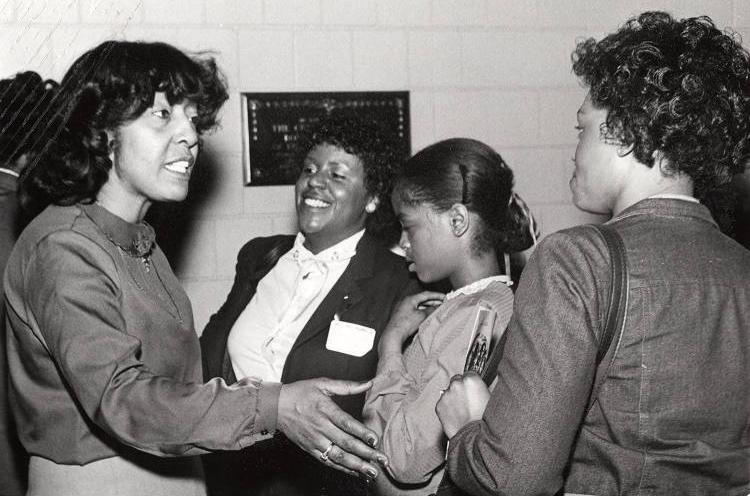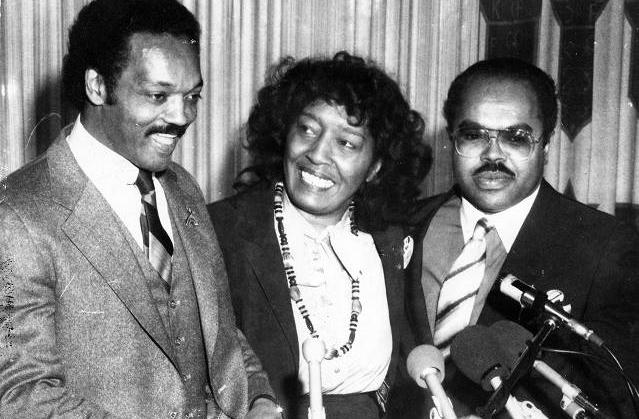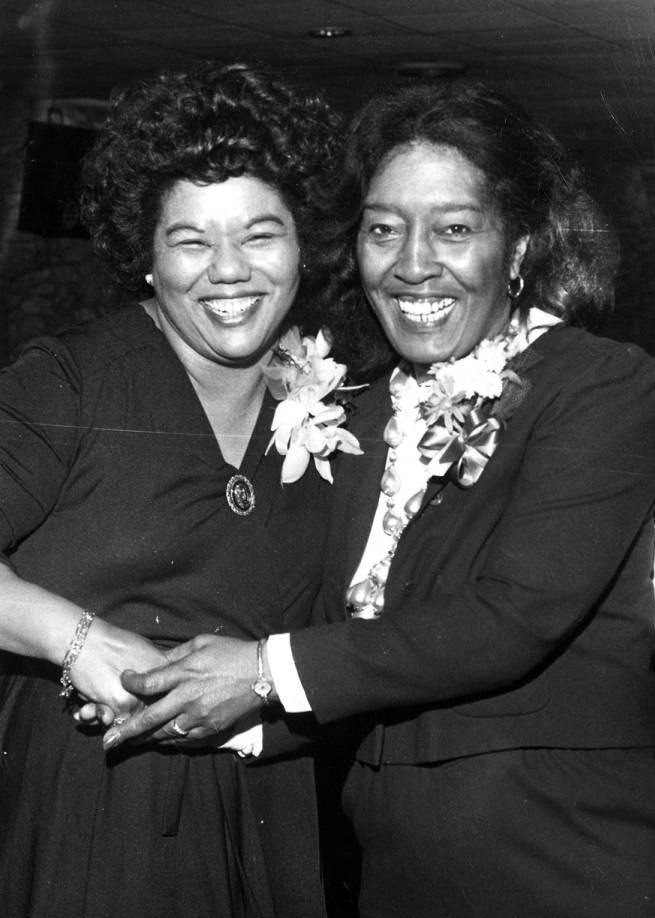
Photo info …
Credit: U.S. Congress, Public domain, via Wikimedia CommonsView Source
(July 8, 1938-Dec. 15, 2007). Julia May Carson was the only child of an unwed mother. Born in Louisville, Kentucky, she moved to Indianapolis in 1939. Growing up in the poor largely African American neighborhood of , she watched her mother toil as a domestic laborer in the homes of wealthy families on Indianapolis’ northside. As a teenager, Carson worked part-time jobs waiting tables, delivering newspapers, and harvesting crops to help her mother.
Carson attended segregated schools, including , established in 1927. Upon graduation from Attucks in 1955, Carson married, had two children, and divorced. In 1965, Carson worked as a secretary with the United Autoworkers Local Chapter 550. Here, she met newly elected U.S. Representative He hired Carson as his legal assistant and caseworker, a position she held for seven years until he coerced Carson to run for office in the Indiana General Assembly. She never imagined herself as a politician but modeled herself after those qualities of Jacobs Jr. that she most admired. In particular, he cared for his constituents, which for Carson came easily.
While Jacobs lost his congressional seat in the 1972 election, Carson became a representative in the Indiana House as a Democrat from central Indianapolis District 45. In 1976, she was elected to the Indiana Senate to represent Senate District 34. She studied at , after it opened in Indianapolis in 1977, and then Indiana University in Bloomington. She held her Indiana State Senate seat until 1990. In the Senate, she served on the finance committee and as assistant minority caucus chair and minority whip.

In 1990, Carson then won the election as trustee. While in this position, she reversed a $20 million debt to a $6 million surplus by organizing workfare programs for non-disabled relief recipients. During the time that she worked in these local and state government positions, she held a day job as the human resources director for an electric company.
Carson’s mentor, Andy Jacobs Jr., is credited with encouraging Carson to run for national office in 1996. She became the first woman and the first African American to represent Indianapolis in Congress, a position she held for six terms.

During her career in Congress, she used her charismatic style to stump for longtime Indiana state legislator , Governor Frank O’Bannon in 1996, and Indianapolis Mayor Bart Peterson in 1999 (see ). For Peterson’s election, Carson hired a truck to drive through areas with low voter turnout to blast sound bites that reminded them to go vote and provided meals to workers at her district’s polling station.
In Congress, Carson fought to improve the lives of her primarily African American constituents. She sponsored a measure to ensure enfranchisement to veterans who served prison terms, and she supported a bill to help individuals and families on the verge of homelessness. One of the highlights of her career came in 1999 when she convinced Congress to pass legislation to posthumously honor Rosa Parks with a Congressional Gold Medal. She also opposed the 2003 Iraq invasion, citing the protection of oil as a baseless cause for going to war.

Throughout her career in Congress, Carson served on the House Banking and Financial Services Committee, Veterans Affairs Committee, and Transportation and Infrastructure Committee. She regularly sponsored legislation that protected children’s safety, health, and nutrition. In 2003, she helped win $11 million in federal funding for highway expansion, street improvements, and enhanced public transportation—all in Indianapolis. Two years later, she sponsored the National Defense Rail Act, the largest Amtrak reauthorization bill in history. Here, she secured $40 billion to develop new rail lines including high-speed rail corridors.
Throughout her career, she never moved from the house in the area bounded by Meridian Street on the west, Fall Creek Parkway on the north, just east of College Avenue on the east, and 22nd Street on the south—then nicknamed “Dodge City” because of its high crime rate and reputation for violence. (The neighborhood since has undergone redevelopment and revitalization. See ) She said that she stayed there because she wanted to provide children who lived in the area with a strong person with whom to identify.
Carson’s final years were fraught with illness. She missed 13 percent of the 923 votes during the 2007 session of Congress. In August 2007, she announced she would run for a seventh term, though she was seen navigating Washington, D.C., in a wheelchair due to a leg infection. In November 2007, Carson announced that she had terminal lung cancer. She died three weeks later.
At her funeral, held at , 2,000 people paid last respects. In attendance were , Nation of Islam leader Louis Farrakhan, and her mentor and friend Andy Jacobs Jr., who considered her “his little sister.” He commended her for her strong connection to her constituents and her commitment to social justice, which never waned.
Indianapolis named a local government center in 1997 the Julia M. Carson Government Center. She was named the Woman of the Year twice. And as a fitting tribute to Carson’s work on the Congressional Transportation and Infrastructure Committee, Indianapolis dedicated the hub for public transit the Julia M. Carson Transit Center. The hub is close to the and the YMCA Bike Hub at .

Help improve this entry
Contribute information, offer corrections, suggest images.
You can also recommend new entries related to this topic.

